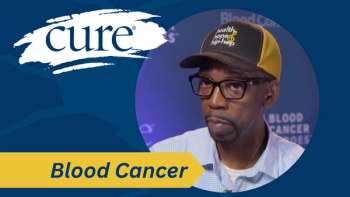
Learning You Have Multiple Myeloma
Transcript:
C. Ola Landgren, MD: Let’s talk about the diagnosis of myeloma. When you first came to me, you had been seen by another doctor because you had this extramedullary growth on the inside of 1 of your ribs. It was pushing into your lung. They put a needle into that, and they found abnormal plasma cells. So, there was a suspicion that this could be something called plasmacytoma, but it could also be multiple myeloma. The difference between those 2 is that plasmacytoma is really only this growth that could be focal in the absence of any more spread of disease, while myeloma is the more generalized spread of the disease in the marrow.
So, the first thing I ordered, in addition to the blood test that I did, was a bone marrow biopsy. I did this to see whether there was evidence of light chain restricted plasma cells. I also ordered a PET/CT and did additional workup. We checked your heart status and things like that. We checked for hypertension. We did a general assessment. What was your impression and your experience with the bone marrow biopsy? That’s an invasive biopsy.
Aurora Torres: The bone marrow biopsy was very painful. I have to admit that it was a very painful procedure. I had never had anything like that done before, so I was a little nervous about it. I’m a person who can take a lot of pain, so I got through it very well. I hoped that I wouldn’t have to have it done again, but I did have it done twice. So, I was already prepared for the second one, but it was a little bit daunting for me.
C. Ola Landgren, MD: The reason you say you had it done twice was because it was done the first time for the diagnosis. That’s what we’re referring to now?
Aurora Torres: Correct, yes.
C. Ola Landgren, MD: The second time that it was done was at a later time, when we referred to it as kind of an assessment for treatment. We will talk about that in a little bit.
Aurora Torres: OK.
C. Ola Landgren, MD: The first time was painful. Was the second time equally as painful or more painful?
Aurora Torres: I was a little bit more prepared for it the second time, so I focused on other things—breathing hard and focusing my mind on other images—so that I would not feel so much pain. This helped.
C. Ola Landgren, MD: How long did the pain persist?
Aurora Torres: Not for long. It’s a very slight time—maybe, I would say for me, less than a minute, really.
C. Ola Landgren, MD: And the following day or the following week, did you have the pain or numbness?
Aurora Torres: Yes, there was pain. It lasted for maybe 2 or 3 days—not a very long time.
C. Ola Landgren, MD: And then you were back to normal again?
Aurora Torres: Yes.
C. Ola Landgren, MD: When you came back to see me—I think it was about a week later—we went over everything. We had the biopsy results from the bone marrow. We looked through that plasmacytoma that was biopsied and diagnosed. Before you came to me, we had the PET/CT, all of the blood work, and a 24-hour urine collection. We looked at everything, and I said to you, “These findings are consistent with a diagnosis of multiple myeloma.” What was your thought when I told you that?
Aurora Torres: Well, I was shocked. First of all, I had never heard of multiple myeloma. I didn’t even know what it was. But I was open to getting as much information about it as possible, being that I didn’t know what it was. I was unaware of it. I started to do my own research on it, just to educate myself more about the disease. A lot of things run through your mind when a doctor tells you that you have cancer, but I tried to put those aside so that I could learn more about the disease without bringing my emotions into it.
C. Ola Landgren, MD: How did it impact your family—your husband and your bigger family?
Aurora Torres: We were all shocked about it because we could never imagine that it would be that type of cancer. Cancer is always something that a person thinks about or keeps in the back of their mind, but a cancer like this, which I had never even heard of, was shocking to us.
C. Ola Landgren, MD: What type of resources did you use? Did you look in books? Did you go on the Internet or talk to people? How did you find out the information about the disease?
Aurora Torres: I contacted the Leukemia and Lymphoma Society (LLS) right away. They sent me literature on the disease, which was very helpful. They have pamphlets that explain everything about myeloma. There’s even an index in the back, which gives you definitions of terms that you are not familiar with. That opened up a lot for me, in order for me to understand more about what the disease was like. I also did a lot of research on the Internet, but you had warned me about that, because you told me that a lot of it would be obsolete—it would not be accurate—so I didn’t rely too much on that. But the LLS really did do a lot for me, in terms of educating me more on what the disease is.
C. Ola Landgren, MD: I think I warned you. I usually warn people who are newly diagnosed that if you look online, there will be a lot of old information and information that does not apply to your case. If you were overwhelmed with a new diagnosis, and you find information saying that survival is going to be very short or that things are very bad, those are things that you don’t really need to hear—and they’re also not accurate. Going to a doctor who knows about the disease and hearing how your particular case kind of translates into the information you can read and find online is very, very important. We talked about this in clinic many times.
Aurora Torres: Yes, I know, so it was very enlightening to read their information. Their information is accurate, and it put me a little bit at rest to know what’s out there—in terms of information from societies like that. I relied more on that than anything else.
Transcript Edited for Clarity




